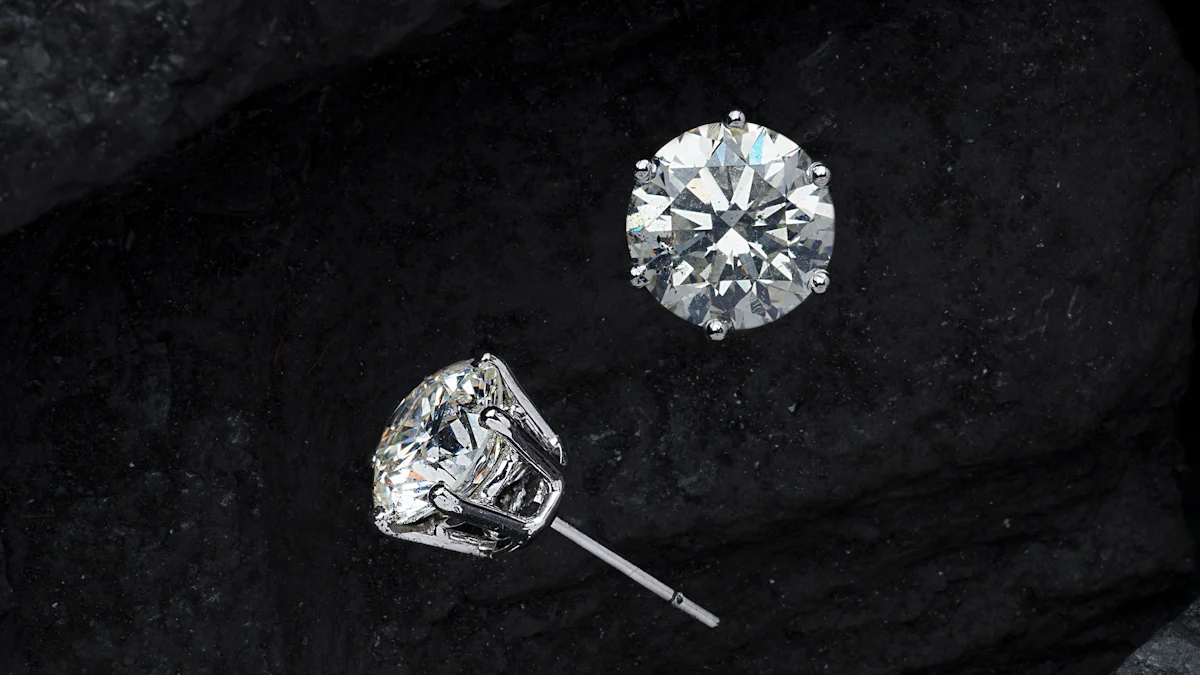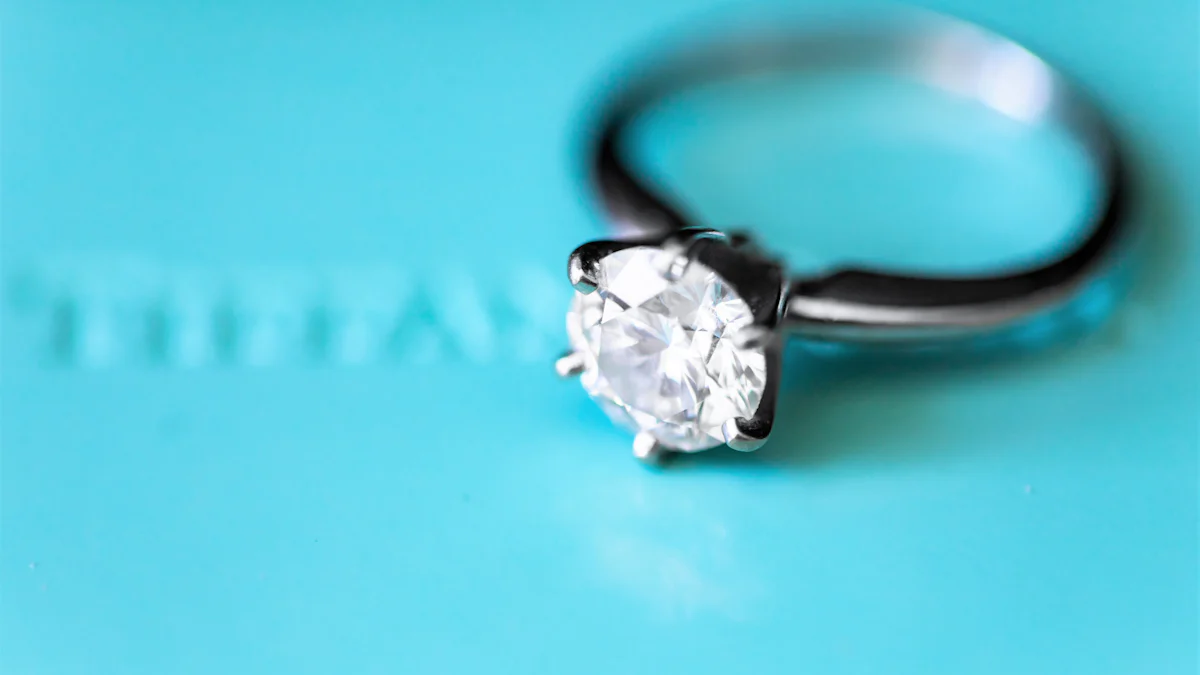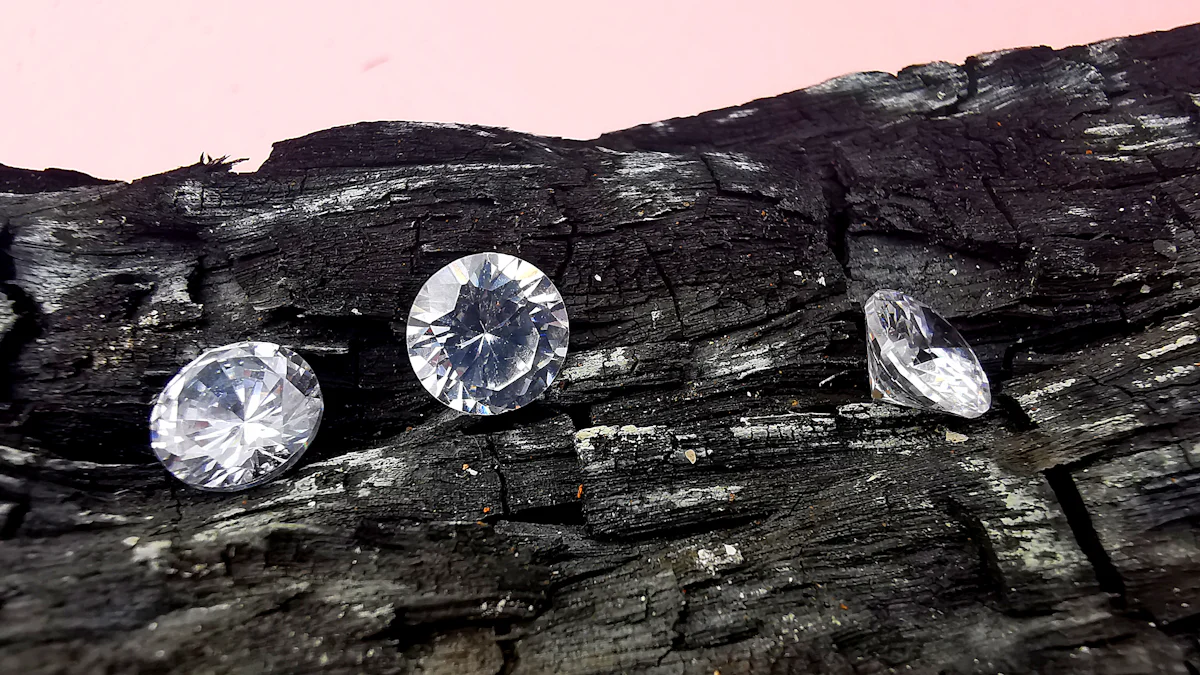VS2 vs VS1: Which Diamond Clarity Shines Brighter?

When it comes to choosing between VS2 vs VS1, the clarity grade of a diamond plays a crucial role. VS1 diamonds rank higher on the clarity scale than VS2, meaning they contain fewer and less detectable inclusions. This makes VS1 diamonds more desirable and often more expensive. Diamond clarity refers to the presence of internal or external imperfections. The VS grades, which stand for "Very Slightly Included," indicate a high level of clarity, making these diamonds appealing to those seeking quality and brilliance.
Understanding Diamond Clarity
What is Diamond Clarity?
Diamond clarity refers to the presence of imperfections within or on the surface of a diamond. These imperfections, known as inclusions and blemishes, can affect the overall appearance and value of the stone. Clarity plays a crucial role in diamond grading, as it helps determine the quality and desirability of a diamond.
Definition and Importance in Diamond Grading
In the world of diamonds, clarity is one of the four key factors, known as the "Four Cs," used to evaluate a diamond's quality. The clarity grade assesses the number, size, and visibility of inclusions and blemishes. A higher clarity grade indicates fewer imperfections, making the diamond more valuable and visually appealing. When you choose a diamond with a high clarity grade, you ensure that the stone will have a brilliant sparkle and a flawless appearance.
Overview of Clarity Grades from Flawless to Included
Diamonds are graded on a clarity scale that ranges from Flawless (FL) to Included (I). Here's a quick overview of these clarity grades:
- Flawless (FL): No inclusions or blemishes visible under 10x magnification.
- Internally Flawless (IF): No inclusions visible under 10x magnification, only minor blemishes.
- Very, Very Slightly Included (VVS1 and VVS2): Inclusions are difficult to see under 10x magnification.
- Very Slightly Included (VS1 and VS2): Inclusions are visible under 10x magnification but not to the naked eye.
- Slightly Included (SI1 and SI2): Inclusions are noticeable under 10x magnification and may be visible to the naked eye.
- Included (I1, I2, and I3): Inclusions are obvious under 10x magnification and can affect transparency and brilliance.
The Significance of VS Grades
The VS grades, which stand for "Very Slightly Included," represent a high level of clarity in diamonds. These grades are popular among buyers who seek a balance between quality and price.
Explanation of VS1 and VS2 Clarity Grades
VS1 diamonds have inclusions that are difficult to detect even under 10x magnification. These inclusions are typically small and sparse, making VS1 diamonds appear nearly flawless to the naked eye. On the other hand, VS2 diamonds have inclusions that are slightly more noticeable under magnification but still remain invisible to the naked eye in most cases. The primary difference between VS1 and VS2 lies in the size and visibility of their inclusions, with VS1 having smaller and less noticeable imperfections.
Common Characteristics of VS Diamonds
VS diamonds, whether VS1 or VS2, share several common characteristics:
- Eye-Clean Appearance: Both VS1 and VS2 diamonds are generally considered eye-clean, meaning their inclusions are not visible without magnification.
- High Quality: These diamonds offer a high level of clarity, making them a desirable choice for those seeking quality without the premium price of higher clarity grades.
- Value for Money: VS diamonds provide an excellent balance between clarity and cost, making them a popular choice for many buyers.
When considering VS2 vs VS1, you should weigh the importance of clarity against your budget and personal preferences. Both options offer beautiful diamonds that can suit a variety of tastes and needs.
Comparing VS1 and VS2 Diamonds

When you compare VS1 vs VS2 diamonds, understanding their differences in quality, price, and visual appearance becomes essential. Each aspect plays a significant role in determining which diamond suits your needs best.
Quality Differences
Internal and External Imperfections
VS1 diamonds rank higher on the clarity scale than VS2 diamonds. This means that VS1 stones contain fewer and less detectable inclusions. These inclusions, whether internal or external, affect the overall diamond quality. In a VS1 diamond, imperfections are minimal and often invisible to the naked eye. On the other hand, a VS2 diamond may have slightly more noticeable inclusions under magnification, but they still maintain an eye-clean appearance.
Impact on Durability and Longevity
The clarity of a diamond can influence its durability. Fewer inclusions in VS1 diamonds contribute to their structural integrity, potentially enhancing their longevity. While VS2 diamonds also offer good durability, the slightly more visible inclusions might impact their long-term resilience. However, both VS1 and VS2 diamonds provide excellent quality for everyday wear.
Price Comparison
Typical Price Range for VS1 vs VS2
The price of a diamond often reflects its clarity grade. VS1 diamonds typically command a higher price due to their superior clarity and rarity. In contrast, VS2 diamonds offer a more budget-friendly option while still maintaining high quality. When considering VS2 vs VS1, you should weigh the importance of clarity against your budget.
Factors Influencing Price Differences
Several factors influence the price differences between VS1 and VS2 diamonds. The rarity of VS1 clarity diamonds makes them more expensive. Additionally, the size and cut of the diamond can further affect the price. When buying a diamond, consider these factors to make an informed decision.
Visual Appearance
Visibility of Inclusions to the Naked Eye
In terms of visual appearance, both VS1 and VS2 diamonds are generally considered eye-clean. This means that their inclusions are not visible to the naked eye. However, under magnification, VS1 diamonds appear clearer than VS2 diamonds. The visible inclusions in VS2 clarity diamonds are slightly more pronounced but do not detract significantly from their beauty.
Impact on Overall Sparkle and Brilliance
The clarity of a diamond directly impacts its sparkle and brilliance. VS1 diamonds, with fewer inclusions, often exhibit a more brilliant sparkle. VS2 diamonds, while slightly less clear, still offer impressive brilliance. When choosing between VS1 vs VS2, consider how much you value the diamond's sparkle and overall appearance.
Choosing Between VS1 and VS2

When deciding between VS1 and VS2 diamonds, several factors come into play. Your budget, personal preferences, and the size of the diamond all influence your choice. Understanding these elements will help you make an informed decision.
Budget Considerations
How Budget Impacts Clarity Choice
Your budget significantly affects your choice between VS1 and VS2 diamonds. VS1 diamonds, with their superior clarity, often come with a higher price tag. If you have a flexible budget, investing in a VS1 diamond clarity might be worthwhile for its long-term value and appeal. However, if you are budget-conscious, a VS2 diamond offers excellent quality at a more affordable price. Both options provide eye-clean diamonds, ensuring that inclusions remain invisible to the naked eye.
Cost-effective Strategies for Buying Diamonds
To maximize your budget, consider these strategies:
- Prioritize Clarity Over Carat: Opt for a slightly smaller diamond with higher clarity. This choice enhances the diamond's overall appearance without significantly increasing the cost.
- Explore Different Shapes: Some diamond shapes hide inclusions better than others. For instance, round diamonds often mask imperfections more effectively than step-cut diamonds.
- Shop Around: Compare prices from various jewelers to find the best deal on VS diamonds. Online retailers often offer competitive prices and a wider selection.
Personal Preferences
Importance of Visual Appeal vs. Technical Grade
Your personal taste plays a crucial role in choosing between VS1 and VS2 clarity grades. Some buyers prioritize visual appeal over technical specifications. If you value a diamond's sparkle and brilliance, a VS1 diamond might be more appealing due to its fewer inclusions. However, if you appreciate a good balance between price and quality, a VS2 diamond can still offer stunning beauty without compromising on clarity.
How Personal Taste Influences Decision
Your decision should reflect your unique preferences. Consider what aspects of a diamond matter most to you. Do you prefer a flawless appearance, or are you more concerned with getting the best value for your money? Understanding your priorities will guide you in selecting the right diamond.
Diamond Size and Clarity
How Size Affects Visibility of Inclusions
The size of a diamond impacts the visibility of inclusions. Larger diamonds tend to reveal imperfections more easily than smaller ones. In a VS2 clarity diamond, inclusions might become more noticeable as the carat size increases. Conversely, a VS1 diamond maintains its eye-clean appearance even in larger sizes, making it a preferred choice for those seeking larger stones.
Recommendations for Different Diamond Sizes
For smaller diamonds, both VS1 and VS2 grades offer excellent clarity. If you are considering a diamond over one carat, a VS1 might be a better investment due to its superior clarity and potential for higher resale value. However, if you prioritize affordability, a VS2 diamond still provides remarkable brilliance and quality.
Choosing between VS1 and VS2 diamonds depends on your priorities. If you value a higher clarity grade and a nearly flawless appearance, a VS1 diamond is ideal. It offers superior clarity with minimal inclusions, ensuring an eye-clean look. However, if you seek a balance between clarity and value, a VS2 diamond is a great choice. It provides excellent quality at a more affordable price, allowing you to allocate your budget towards other features like cut or size. Both options deliver beautiful, eye-clean diamonds that cater to different preferences and budgets.
FAQ
What is the difference between VS2 and VS1 diamond clarity?
The primary difference between VS2 and VS1 diamond clarity lies in the visibility and number of inclusions. VS1 diamonds have inclusions that are typically harder to see under 10x magnification. In contrast, VS2 diamonds have inclusions that are more apparent. This difference affects the diamond's appearance and value.
How does the clarity grade affect a diamond's value?
Clarity significantly impacts a diamond's value. Diamonds with fewer inclusions, like those in the VS1 grade, tend to be more valuable due to their cleaner appearance. The clarity grade helps determine the overall quality and desirability of a diamond.
Are VS1 diamonds worth the higher price compared to VS2?
VS1 diamonds often command a higher price because of their superior clarity. If you prioritize a nearly flawless appearance and long-term investment value, a VS1 diamond might be worth the extra cost. However, if you seek a balance between quality and affordability, a VS2 diamond still offers excellent value.
Can you see inclusions in VS2 diamonds with the naked eye?
Generally, inclusions in VS2 diamonds are not visible to the naked eye. These diamonds are considered eye-clean, meaning their inclusions do not detract from their beauty without magnification.
Do VS1 diamonds sparkle more than VS2 diamonds?
VS1 diamonds may exhibit a slightly more brilliant sparkle due to fewer inclusions. However, both VS1 and VS2 diamonds can offer impressive brilliance. Your choice should depend on how much you value the diamond's sparkle and overall appearance.
How should I choose between VS1 and VS2 diamonds?
Consider your budget, personal preferences, and the size of the diamond. If you have a flexible budget and prioritize clarity, a VS1 diamond might be ideal. For those seeking affordability without compromising quality, a VS2 diamond provides excellent value.
Does diamond size affect the visibility of inclusions?
Yes, the size of a diamond can impact the visibility of inclusions. Larger diamonds may reveal imperfections more easily. In a VS2 clarity diamond, inclusions might become more noticeable as the carat size increases. A VS1 diamond maintains its eye-clean appearance even in larger sizes.
What does "Very Slightly Included" mean?
"Very Slightly Included" (VS) refers to diamonds with minor inclusions that are difficult to see under 10x magnification. VS1 and VS2 are two grades within this category, with VS1 having fewer and less noticeable inclusions than VS2.
Are there cost-effective strategies for buying diamonds?
Yes, consider prioritizing clarity over carat size, exploring different shapes that hide inclusions better, and shopping around for the best deals. These strategies can help you find a high-quality diamond within your budget.
How do personal preferences influence diamond choice?
Your personal taste plays a crucial role in choosing between VS1 and VS2 clarity grades. Some buyers prioritize visual appeal, while others focus on getting the best value for their money. Understanding your priorities will guide you in selecting the right diamond.
See Also
Exploring The Basics Of Engagement Ring Diamond Cuts
Key Characteristics Of A Perfect Diamond Ring
A Detailed Look At Tungsten And Traditional Diamond Rings

